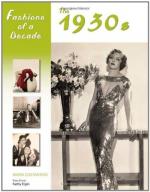|
This section contains 162 words (approx. 1 page at 300 words per page) |

|
On 30 April 1936 at a joint meeting of the American Physical Society and the Institute of Radio Engineers, both George C. Southworth of the Bell Laboratories and Wilmer L. Barrow of MIT, working independently of each other, announced the invention of a coaxial cable utilizing ultrahigh-frequency radio waves. This cable allowed an increase in the number of phone communications being carried over a single line. The Bell system, which had been tested between New York and Philadelphia, allowed as many as thirty-five voice channels. A coaxial cable was formed of two copper tubes about as thick as a pencil, each carrying messages in one direction. In the middle of each tube a wire was held by pieces of hard rubber so that it would not touch the metal. Eventually, the first commercial link, in the summer of 1941, would provide six hundred channels.
Source...
|
This section contains 162 words (approx. 1 page at 300 words per page) |

|




